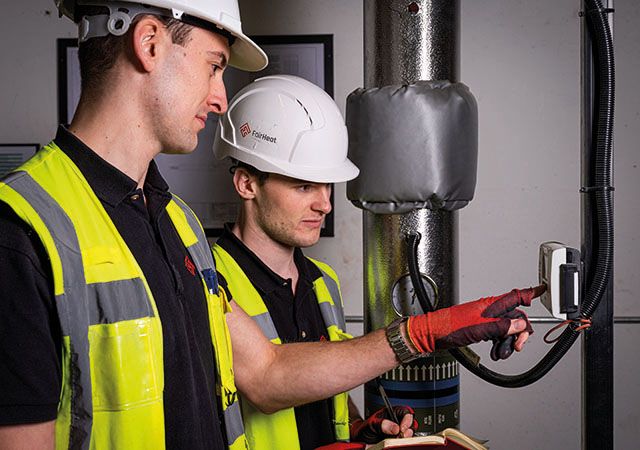
Regulations will bring about annual monitoring of heat networks
With new mandatory heat network standards due to come into force for operators in less than a year, CIBSE co-hosted a timely one-day conference on residential heat networks last month, in London.
The Heat Networks (Market Framework) (Great Britain) Regulations will require new and existing heat networks to meet minimum technical standards for design, installation and operation, as described in the Heat Network Technical Assurance Scheme (HNTAS). They are set to come into force on 1 April 2025, when the energy ombudsman will start handling disputes and Citizens Advice will begin offering support to customers. The authorisation regime is due to start on 27 January 2026, and heat network operators and suppliers must obtain authorisation to operate by 27 January 2026.
Experts at the conference, co-hosted by CIBSE’s Heat Networks and HVAC Groups and Yen London, examined the challenges and opportunities for residential heat networks. Rachel Mills OBE, director at Chirpy Heat, opened by reporting on positive customer feedback from the Heat Network Consumer and Operator Survey 2022. She said heat network consumers reported a median annual heating and hot-water cost of £600, £360 lower than for non-heat network consumers. They were also more satisfied with their heating – 74% compared with 67% – but outages were more common among heat network customers, with 25% complaining about heating in the previous 12 months.
HNTAS will help address technical issues, said Mills, but she is concerned about the cost: ‘I think it’s going to be an exceptionally expensive journey.’
FairHeat senior engineer Lucy Sherburn discussed HNTAS, which is due to go out for consultation later this year. She identified issues that were leading to poor outcomes for customers, including oversizing, unnecessary complexity, poor water quality, poor commissioning, high heat losses, no meters and data. ‘The aim of HNTAS is to prevent these poor outcomes from occurring,’ said Sherburn.
Heat Trust chief executive Stephen Knight also highlighted issues faced by consumers, including the high cost of heat, system inefficiency, reliability issues, non-compliance with metering regulations, and not being able to change suppliers. ‘All these issues drive the need for regulation,’ he said.
FairHeat senior engineer Ellen Hassett spoke of the Heat Network Optimisation Guide (HNOG), which is aimed at the 14,000 existing heat networks. She said there was a lack of guidance for improving performance and HNOG aimed to close this gap.
Beata Blachut, head of strategic business development at SAV Systems, looked at the benefits of designing energy centres with large delta T air source heat pumps. She explained that heat pumps using natural refrigerant were much more efficient than those using synthetic refrigerants at a high delta T, resulting in an increased coefficient of performance, from about 2.7 to 3.3. A higher delta T also gives more opportunity to increase thermal storage, said Blachut.
Tom Vosper, strategic project manager – heat networks at the London Borough of Southwark, gave an overview of the council’s strategy of modernising heat networks to provide 17,000 connected households with low carbon, low-cost heat. The council installed three ‘large-scale’ open water ground source heat pumps (GSHPs) on existing heat networks after analysis identified the best locations for boreholes. Two 600kW open water GSHPs on the Newington Estate have led to the rapid decarbonisation of 430 properties and improved air quality.
In the final presentations, Dr Gabriel Gallagher MCIBSE, managing director at Sustainable Energy, spoke about design optimisation of residential networks using dynamic simulations, and Michael Moggeridge, MD of Qvantum, looked at the benefits of in-apartment water source heat pump systems providing heating and cooling.
- For more on YEN London visit bit.ly/CJYenLon and for CIBSE’s HVAC and Heat Network groups visit bit.ly/CJSIG
